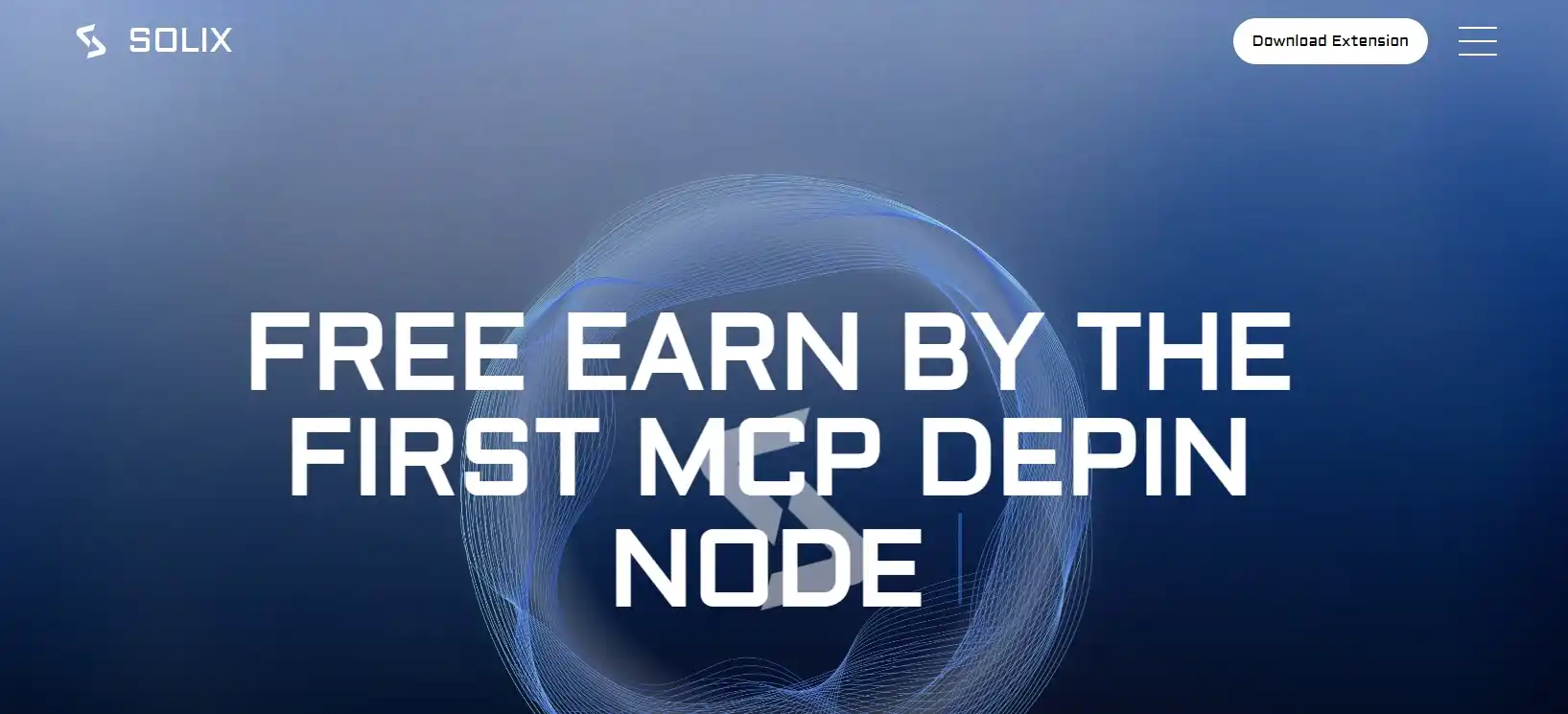In recent years, the concept of Decentralized Physical Infrastructure Networks (DePIN) has attracted the attention of developers and users striving to create a more open and fair internet. The Solix project has become one of the prominent representatives of this direction, offering an innovative solution for monetizing unused internet bandwidth. With its own Model Context Protocol (MCP), Solix ensures intelligent traffic distribution while maintaining the quality of user experience. In April 2025, the project raised $29.5 million in investments from the Eclip Foundation, confirming its potential and demand in the market.
Contents:
- What is Solix?
- MCP Technology and Its Benefits
- How Solix Works
- Investments and Project Development
- Benefits and Prospects of Solix
- Conclusion

What is Solix?
Solix is a decentralized physical infrastructure network (DePIN) that allows users to share and monetize their unused internet bandwidth. Unlike traditional solutions, Solix uses the Model Context Protocol (MCP), which integrates artificial intelligence with real traffic data for dynamic and intelligent resource distribution. This allows users to earn SLIX Points without affecting the quality of their internet connection. The project aims to create a more accessible and efficient internet where every participant can contribute to the development of the network.
MCP Technology and Its Benefits
Solix uses the Model Context Protocol (MCP) in conjunction with artificial intelligence for dynamic distribution of internet bandwidth, ensuring effective and secure resource utilization. This technology allows the network to adapt to current conditions, minimizing its impact on user experience.
The main features of MCP technology and AI in Solix:
- Dynamic bandwidth distribution: Solix uses MCP for intelligent traffic management, allowing resource distribution to adapt to current network load and needs.
- Integration with artificial intelligence: AI analyzes traffic data and automatically adjusts network parameters, ensuring optimal performance without user intervention.
- Support for multi-contract architecture: MCP allows Solix to manage multiple smart contracts simultaneously, facilitating scalability and flexibility of the network.
- Privacy and security protection: The use of MCP and AI allows Solix to implement data protection mechanisms, preventing personal information leaks and ensuring user security.
- Adaptability to network changes: The technology allows Solix to quickly respond to changes in the network infrastructure, ensuring stable operation even in unstable connections.
The implementation of MCP and AI in Solix represents a significant step in the development of decentralized networks, ensuring effective resource usage and improved user service quality.
How Solix Works
Participation in the Solix network begins with installing a browser extension available on the official project website. After connecting via a wallet or Google account, the extension starts running in the background, analyzing internet traffic and dynamically distributing unused bandwidth using MCP. For each unit of transmitted traffic, users earn SLIX Points, which can be used within the Solix ecosystem or exchanged for other digital assets. The process is fully automated and requires no user intervention, making it convenient and accessible to a wide audience.
Investments and Project Development
In April 2025, Solix raised $29.5 million in investments from the Eclip Foundation, marking a significant milestone in the project's development. The funds will be used to improve MCP technology, expand global presence, and implement new features such as intelligent bandwidth distribution and network optimization through artificial intelligence. Additionally, Solix plans to establish partnerships with cloud service providers and content delivery networks, which will expand the possibilities for decentralized traffic exchange and strengthen the project’s position in the Web3 market.
Benefits and Prospects of Solix
Solix is an innovative platform that opens up new opportunities for users and developers. One of its main advantages is the ability to monetize unused bandwidth, improving economic efficiency without compromising connection quality. The system also uses MCP for dynamic and effective resource distribution, significantly increasing the network's stability and scalability. The decentralized structure of the network enhances its security and reduces dependence on large providers.
| Advantage | Description |
|---|---|
| Bandwidth Monetization | Allows users to earn from unused resources, improving their efficiency. |
| Dynamic Resource Distribution | MCP technology provides flexibility and real-time network optimization. |
| Decentralized Security | The lack of centralized management increases reliability and reduces risks. |
Considering the growing demand for high-speed internet, particularly in areas like artificial intelligence and the Internet of Things, Solix has excellent prospects in the decentralized solutions market.
Conclusion
Decentralized networks like Solix open new horizons for monetizing internet resources and improving the efficiency of network infrastructures. Using technologies such as MCP and artificial intelligence allows dynamic traffic management, ensuring stable and secure connections. The project has significant growth potential, as confirmed by investments and plans for expansion. In the future, such solutions may change the way the internet is created and used, providing greater flexibility and accessibility for users.





